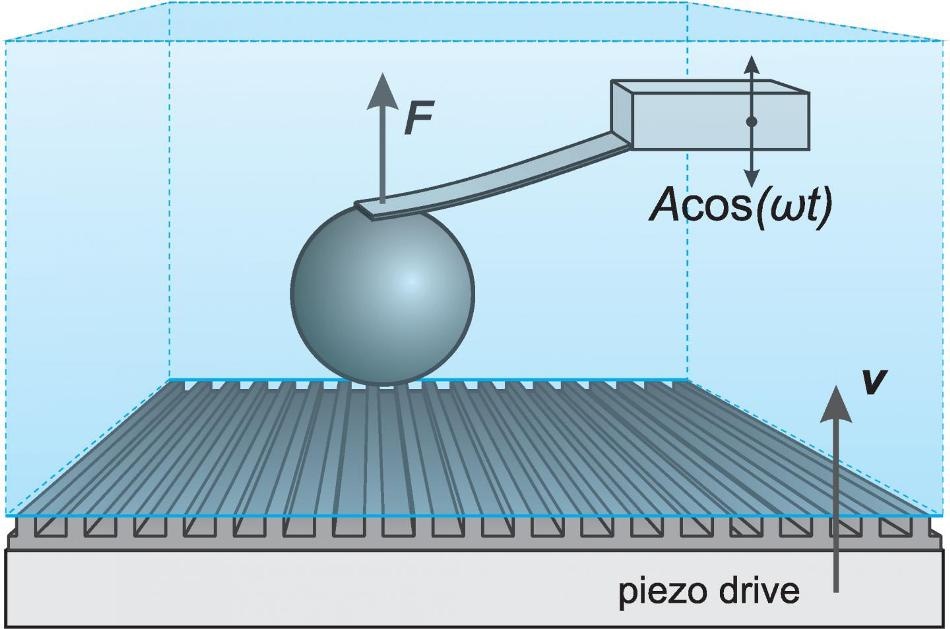Oct 14 2016
 A microsphere attached to the tip of an atomic-force microscope is moving towards the superhydrophobic surface. Due to the unusual texture the viscous response of the water in this system is very different from that of a normal flat wall. Credit: Taras Molotilin
A microsphere attached to the tip of an atomic-force microscope is moving towards the superhydrophobic surface. Due to the unusual texture the viscous response of the water in this system is very different from that of a normal flat wall. Credit: Taras Molotilin
When flowing closely to a few specially designed surfaces, water and various other liquids develop a strange property. The speed at which water flows is not equal to zero even in the layer directly touching the wall.
This explains the fact that liquid does not adhere to the surface, and hence slides along the side of the surface. This effect is known as hydrodynamic slip, which was initially explained more than 200 years ago. However, at that time this effect was not well recognized as it failed to influence the cumulative liquid flow.
The invention of superhydrophobic materials completely changed this situation. As an outcome of this change, chemical hydrophobicity met an unusual geometry of the surface, for example, micro-pillars or grooves. Air bubbles could be trapped in the cavities of these textures. These air bubbles allow the liquid to slip along the surface with no resistance, majorly increasing the length of the slip in these systems.
Complex superhydrophobic materials instantly needed new hydrodynamic theories capable of describing them. These new theories predicted a few peculiarities of the behavior of liquid present near the anisotropic surfaces, the ones comprising properties that depend on direction. The reduction of viscous resistance was also predicted by the new theories.
For example, it has been observed that close to the surface covered with elongated grooves misaligned to the main flow, the liquid could both turn and spin by itself, without any extra leverage. This effect could result in active mixing or separation of microparticles immersed into the flow.
For many years, researchers from Lomonosov Moscow State University and the Institute of Physical chemistry and Electrochemistry RAS have been working on theories of hydrodynamic slippage close to anisotropic superhydrophobic surfaces. However, until now it was only possible to indirectly test these theories in experiments.
In the new study, the team were able to determine the slip length and also analyze the analytic formulas that explain liquid behavior at varied distances from superhydrophobic surface with the help of an atomic-force microscope.
The researchers used the AFM-device to shift an immersed spherical microparticle towards the superhydrophobic surface at a steady speed. It was also possible to monitor the location of the sphere in a channel with excellent precision.
The force that affected the sphere because of the viscous resistance of the water was measured by the scientists. A theoretical solution for this method has been obtained by authors, and this solution enabled measuring the slip length from experimental dependence of hydrodynamic force on height over the superhydrophobic surface.
Authors of this research highlight that the results obtained from this work will be considered as a starting point for producing new superhydrophobic systems. Researchers now have the opportunity to bring to life those theoretical ideas that were previously developed as doubts about the accuracy of the proposed theories no longer exist. Among those it was possible for one to name particle segregation in systems with electroosmotic flows, superhydrophobic channels and various other practical applications.